Story at a glance:
- In the US only 1% of used carpet is recycled back into carpet each year.
- There is huge potential for making more sustainable carpets.
- Sustainable carpets enhance green interior design.
The EPA estimates that more than four billion pounds of carpet is discarded in landfills annually. Nearly all of it is made of plastic derived from non-renewable fossil fuels. According to the Changing Markets Foundation, of the less than 5% that is recycled, only 20% is turned back into carpet. The rest is downcycled. That means that only 1% of used carpet is recycled back into making new carpet each year.
Green builders and designers can help change this unsustainable state of affairs by purchasing only all-natural carpet or recycled carpet. In this article we explore options to make more sustainable decisions in carpeting.
Trends in Sustainable Carpet
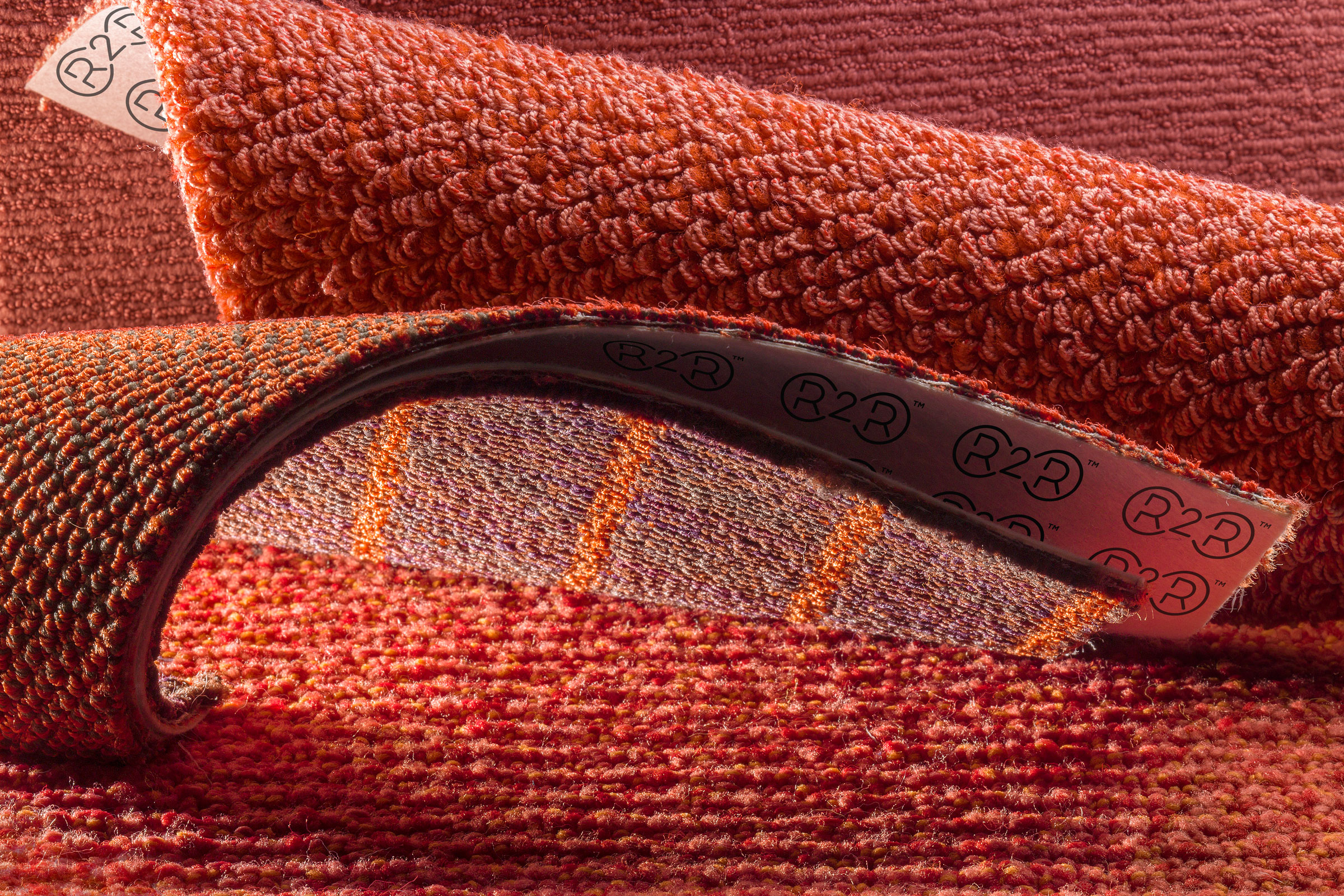
Aquafil works closely with its customers on a concept they call “Born R2R,” or born regenerated to be regenerable, to encourage them to create products with eco-design in mind. Photo courtesy of Aquafil
While reusing plastic fibers to create new carpet is a more sustainable approach for green interior design compared to using virgin plastic in brand new carpet, other carpet choices work better in circular design.
All-natural carpet materials include: organic cotton, organic wool, and bamboo. Newer options include hemp, seagrass, jute, or coconut coir. All of these materials are biodegradable. Synthetic fertilizer and pesticides aren’t needed. Carpet backing material is also an issue. Traditionally it has been made of plastic. Look for natural materials such as non-synthetic latex or untreated wool.
A joint report conducted in 2023 by Revolution Plastics at the University of Portsmouth and sustainability consultancy experts SB+CO revealed no carpet manufacturer has set forth a microplastic reduction policy. Microplastics have come under increasing scrutiny because of the plethora of associated adverse health and environmental impacts. Since a 2021 study concluded that carpets can double the number of microplastics fibers in the home, where we spend nearly 90% of our lives, there is potential for breathing in high concentrations of microplastics. We look forward to microplastic reduction strategies from carpet makers.
Examples of Sustainable Carpet Companies
As US landfills grow in number and in size, it’s more important than ever to reduce, reuse, and recycle. These companies divert used carpet from landfills and creat more sustainable carpet solutions.
Aquafil
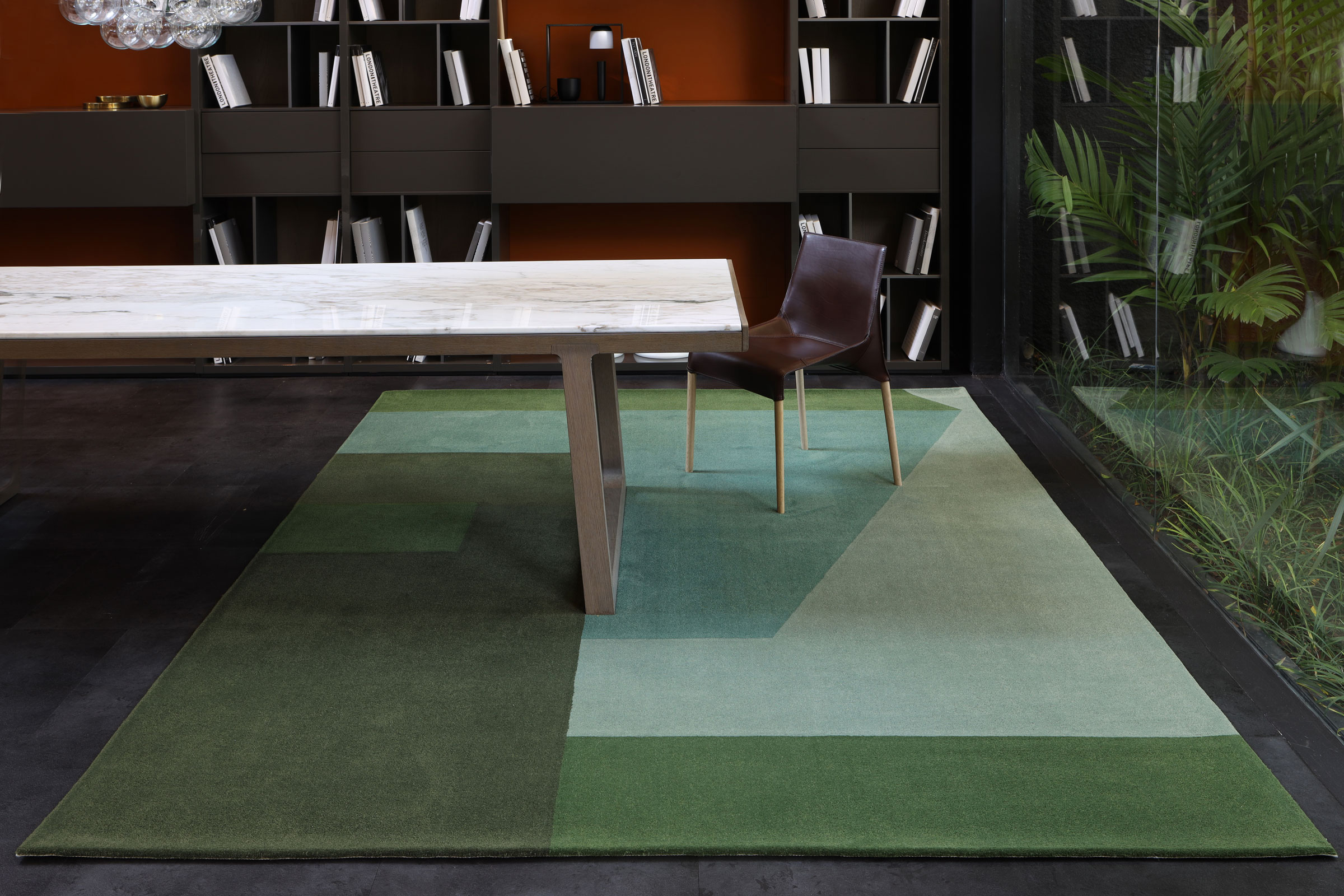
Punto e Filo Rug Made with ECONYL nylon. Photo courtesy of Aquafil
Aquafil is the creator of 100% recycled nylon fibers called ECONYL, that performs exactly as virgin nylon made with non-renewable fossil fuels.
“ECONYL even reduces the global warming impact of nylon by up to 90% compared with the material from oil. Aquafil is also building its carpet recycling network with several centers active in the US. Each facility has the capacity to collect and treat 36 million pounds of carpet each year, making a sizable dent in the waste stream,” says Franco Rossi, president of Aquafil USA, in an earlier article for gb&d.
Universal Fibers
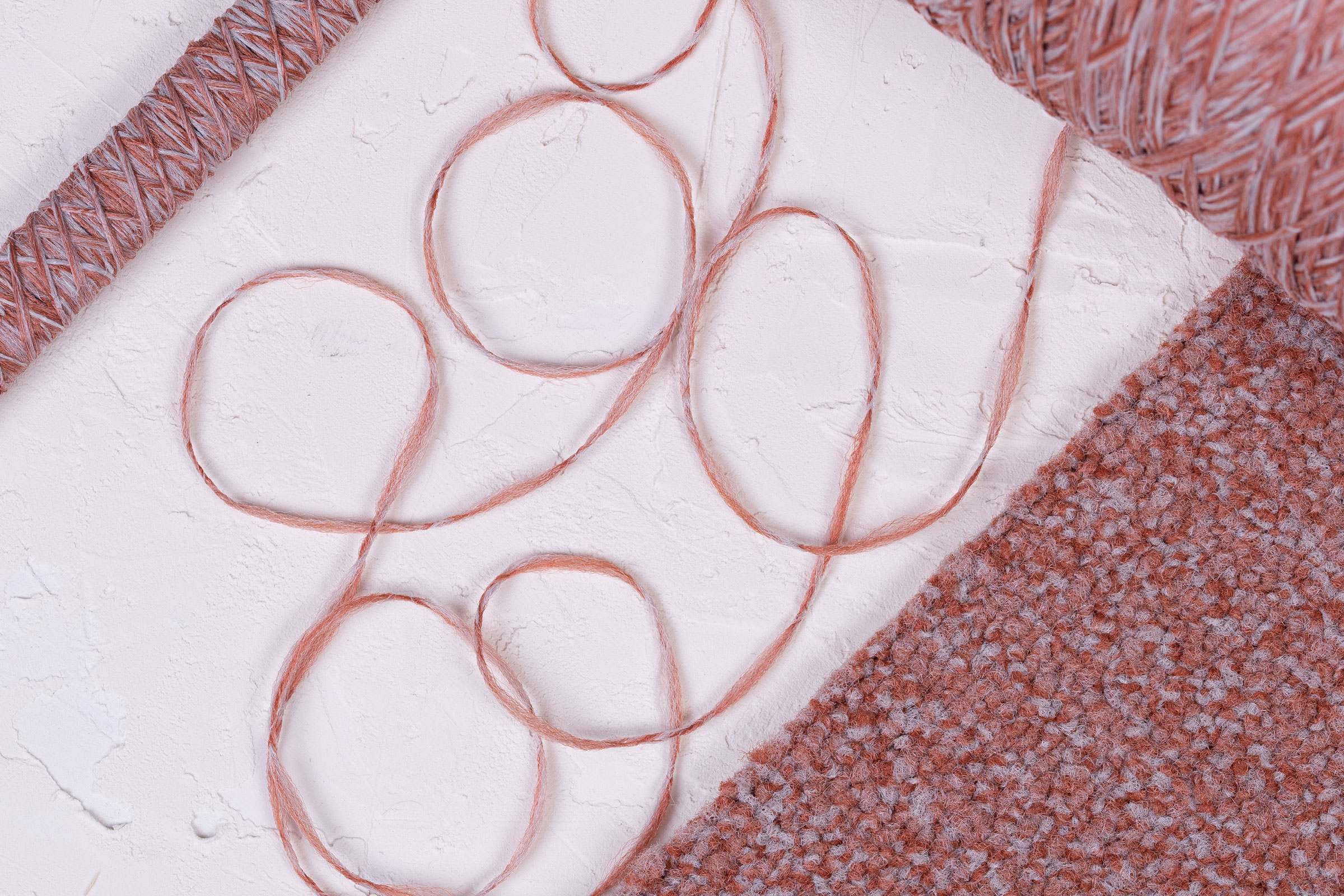
Photo courtesy of Universal Fibers
Universal Fibers was the first company to incorporate post-industrial recycled content into carpet products followed by creating the world’s first and only carbon-negative nylon fiber, Thrive, in June 2021. “Eco-responsible designers should also question how the product is colored. At Universal Fibers, we use a solution-dyeing process that not only has many performance advantages but also uses virtually zero water,” says Ranae Anderson, global sustainability leader for Universal Fibers, in an earlier article for gb&d.
After a service life of up to 12 years, Universal Fibers can be reused. “We work with our customers to transition the used carpet for a second life. The components may be recycled back into new carpet or used as raw materials in another industry. For example, the automotive sector values nylon 6,6 chemistry for use as a high-heat exposure component under the hood…We serve carpet manufacturers in commercial, residential, and automotive segments, as well as 14 additional markets…Many people don’t realize this, but you may have even tasted our product by using dental floss made with our fiber,” Anderson says.
Interface
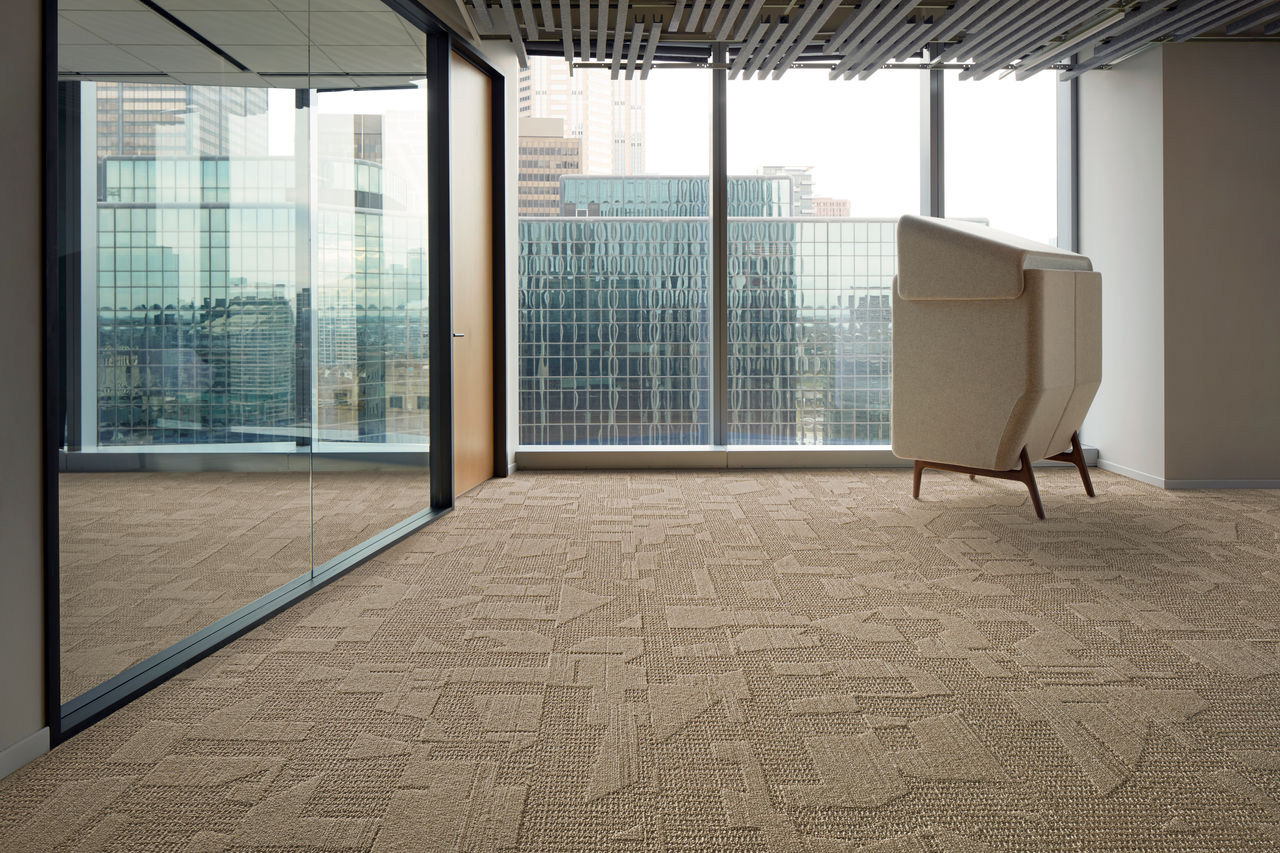
Etched & Threaded includes two bold, geometric styles that draw inspiration from natural stone formations and polished pebbles. Photo courtesy of Interface
Global flooring company Interface became carbon neutral in 2019 with the help of carbon offsets. Now they plan on achieving carbon neutrality without offsets.
“We’re saying, ‘What if we didn’t pay for the offsets and we paid for innovations that helped us get further instead to reach carbon negative as a company? That’s our 2040 goal. As of 2025 everything we were spending on offsets plus more we are putting into innovation,” says Erin Jende, director of marketing at Interface, in a previous article for gb&d.
One recent Interface product, Etched & Threaded, features seven modular carpet tile styles in 12 neutral tones inspired by the biophilic designs that natural stone and polished pebbles present. Designers can choose from two styles featuring large geometric patterns and three products in cable knit, tweed, and threaded patterns.
Bentley Mills
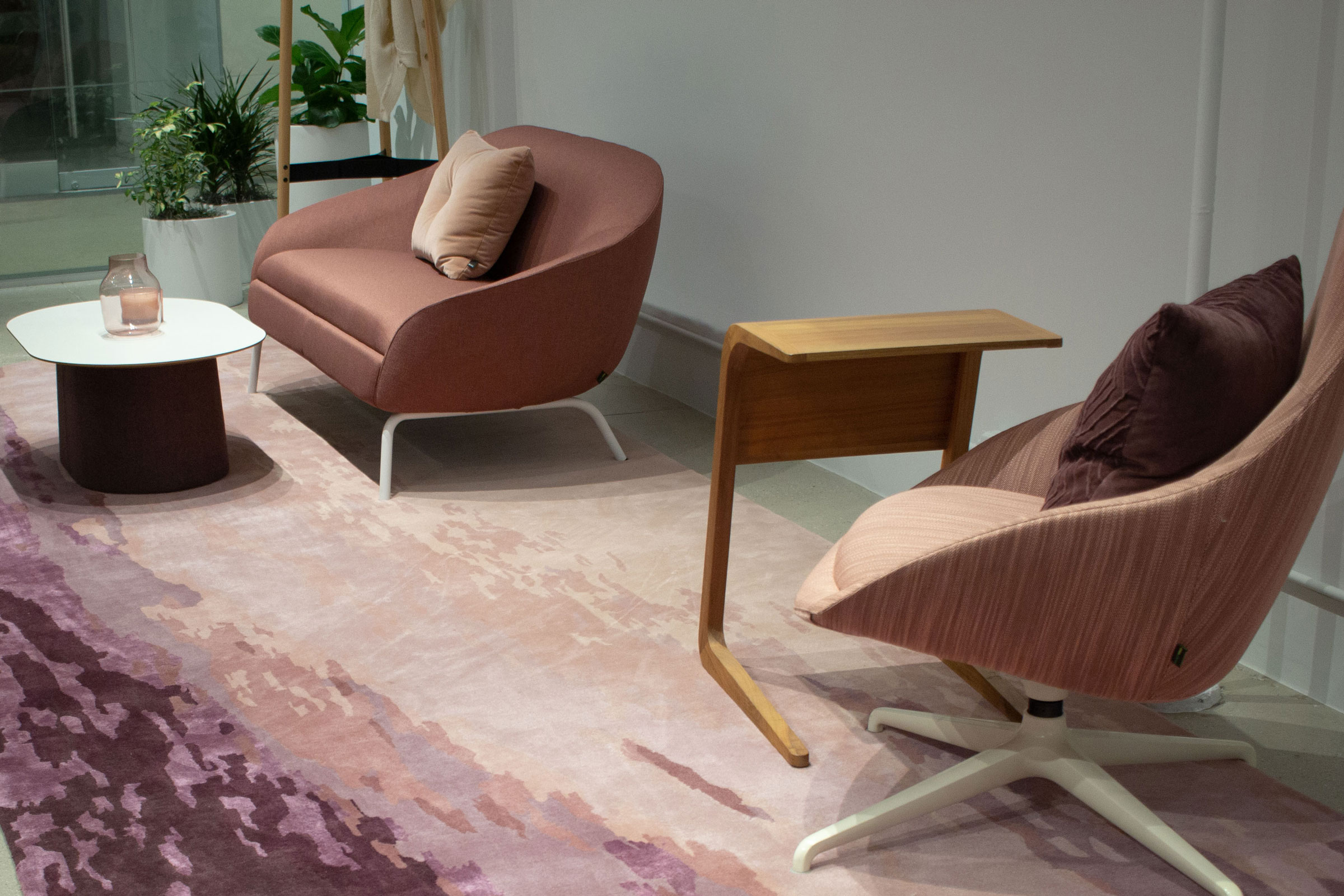
Prima Vista by Bentley offers customizable wool area rugs. Photo courtesy of Bentley Mills
As the first manufacturing facility in the US to be LEED certified, Bentley Mills has more recently earned cradle-to-cradle (C2C) certification for its carpet tiles. “We worked very closely with Cradle to Cradle to make sure the line we picked out and the technology we picked out would be outstanding, from what goes into the product and from a recycling standpoint at the end of the product’s life,” Ralph Grogan, Bentley’s CEO, states in an earlier article for gb&d.




